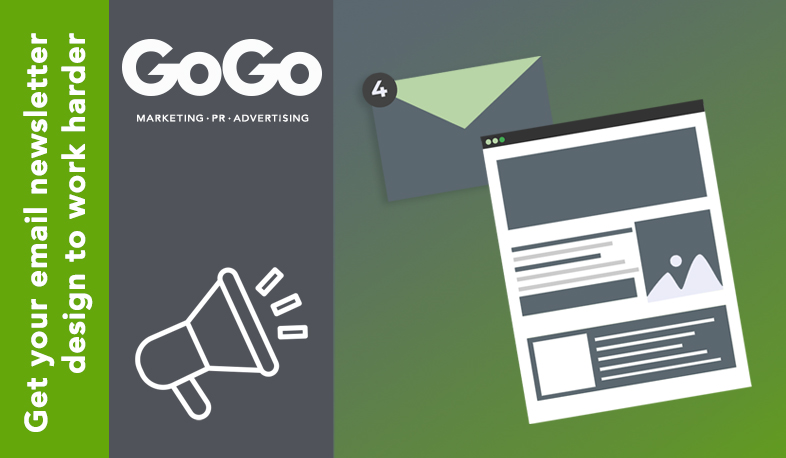Everyone has an email account – according to Campaign Monitor, there are three times more of them than Facebook and Twitter accounts combined. Therefore, email newsletters are hugely important and a significant marketing channel that gives your business the opportunity to talk directly to customers present and past, plus potential leads – making them a must-have in any marketing strategy toolkit.
Here are our seven key areas to consider when we design an email newsletter template that will engage the audience:
Ensure trust
Email marketing should be used to effectively build relationships and trust with your audience. If thought out and executed well, your newsletter should be a true representation of your business and reflect your branding, tone of voice and website design.
Headers and footers are a big part of this – when designed well, they can reassure your audience that the email is part of your brand, to the point that they could even be on your website. If your email looks generic or disjointed from your other marketing efforts, it could result in poor engagement and even unsubscribes (but we’ll get to that!).
Audience Segmentation
This is a marketing strategy tool used to identify subgroups within your target audience. It can be a really valuable process – creating more bespoke content to be even more relevant to that smaller pool of your audience.
However, we do understand that it’s quicker and easier to send one email out of your whole pool of clients or customers, but in our experience, to really engage and speak to your audience, a tailored approach can be very beneficial.
Seth Godin, an author and marketing expert said in an interview with Inc., “We worry about disappointing, missing, offending or otherwise leaving behind someone who might become our customer – to avoid this, we try to produce content that will appeal to everyone.” But this leads to content that is generic and your customers want “specific”, as Godin puts it.
Design at least two templates
Email templates are essential to keep your campaigns looking consistent. You may want to consider designing at least two variations, making sure you are clear about the type of content that should go into each, but this will help you target your segmented audiences!
We usually recommend that you have one template for promotions, products or services, and another for more informative news updates. This way, your content remains very clear and it doesn’t potentially, end up looking like a bit of a mess.
We like to talk about the inverted pyramid at GoGo: a technique in design that draws your audience’s attention down the template towards the call to action, and encourages those sought-after click-throughs.
Think up and design effective CTAs (calls to action)
Speaking of these, your email design should have strong CTAs and ways for your audience to engage and interact with your business. This can be as simple as including clear buttons and actions to take, links to your social media channels and your business contact details.
We also love a share button in an email newsletter. What could be better than your current audience informing and educating a potential lead?
Optimise for mobile and desktop
Design and/or consider for different screen sizes, as well as a desktop version. According to Hubspot, mobile phones account for 46% of all email opens, so ensuring you understand where your audience consumes their emails is very important – you could be missing out on leads due to poor mobile user experience. B2B compared to B2C would see a slightly different importance, but is still worth considering.
Be concise
We advise designing your emails so they don’t have to rely on heavy amounts of copy, and we know personalisation will go a long way! The opportunity to speak directly to your customers shouldn’t be overlooked, and creating a personalised email will stand out and engage your audience – so incorporate their name!
It’s a good idea to think of your email as one-to-one rather than one-to-many – your tone and relevance will then look customised, and your audience will relate and engage.
Unsubscribes are obviously to be avoided, but they can also lead to valuable information about your audience. If you notice a particular email generated more unsubscribes than any other, it’s worth looking at the content. Was it relevant or interesting to your audience? Too pushy or generic? Using this information can strengthen future campaigns.
Think about your brand!
Always consider your brand when designing – like we have discussed above, your customer needs to feel that your email is part of your business. We use your brand colours, and any assets such as photography or illustrations, that will draw an audience in. We recommend creating a hierarchy of information, in order to communicate in the best and clearest way possible.
Fonts can be tricky. We would encourage you to use websafe ones or those that are on your website, because your customer’s computer may not have your alternative chosen font installed and will default to another. This can end badly…
Do you want to create an engaging and brand-aligned email template? Get in touch with our team, who will be more than happy to talk through any ideas.







